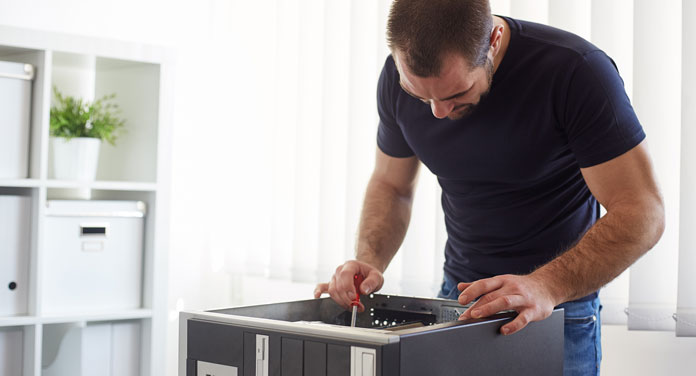PC case broke - If the power button is broken Probably the worst horror scenario for every PC owner: You press the power button, but your PC...
 PC case broke - If the power button is broken
PC case broke - If the power button is broken
Probably the worst horror scenario for every PC owner: You press the power button, but your PC doesn't move. No movement and the screen stays black. This may be a frightening idea for many at first, but the cause can be many things. It's not uncommon for it to be trivial things like a plug that's not properly plugged in. However, there are many other possible reasons. A very common cause of your computer not making a sound is that the PC case is defective.
But how can a PC case be defective at all? To be precise, it's usually not the case itself, but the built-in I/O panel. This panel houses all the important connections and buttons of your computer and is part of your PC case. As with all technical devices, a defect can also occur here. We'll show you how to tell if your PC case is defective and what you can do about it.
What problems can you face with a defective I/O panel?
If your PC case has a defect, then the biggest problem is if your power button is defective or no longer receiving power. The consequence is quite easy to explain. Your PC simply stays off. However, sometimes the power button may work intermittently and boot up your computer.
But if the power button is defective, other parts of your I/O panel can also be affected. For example, it can also happen that certain connections and ports on your case no longer work. This applies in particular to the USB ports and the jack sockets for the headphones.
Find the source of the error
If you suspect that a defective I/O panel is preventing your computer from starting, you should first rule out other sources of error.
If a PC no longer boots or does not turn on at all, there may be several reasons. However, the most likely source of error is the power supply unit. Because if your PC no longer starts, it may simply be that it is no longer receiving power. Therefore, first, check your power supply for function.
You can either build this into another computer or start the PC without the help of your case. Most motherboards have their own power button. All you have to do is press it manually. If your PC then starts, you can assume that your PC case is defective. However, a broken power supply is ruled out.
If this method is unsuccessful, you can also check the functionality of the remaining components of your PC. A defective CPU in particular can sometimes prevent the computer from booting. If you have another PC with a suitable CPU socket, you can try installing your CPU there and test it for proper functionality.
Another problem that often prevents the PC from starting is that the cables from your case's I/O panel have become loose. Therefore, check all relevant cables for correct seating.
If your PC simply turns off during use, the cause may not be directly in the housing, but in it. Too much dust accumulated over the years can limit your air cooler's cooling process so much that the PC shuts itself down due to overheating. Your computer is particularly susceptible to this in summer.
So make sure to clean your PC regularly from the inside as well. Your best bet is to unplug him (or her) and clear some space on your desk. Cotton swabs and tweezers are enough to pull the worst dust mice out of your CPU fan.
What to do if the PC case is defective?
If you have clearly identified the cause and a defective power button is the root of all evil, the question now arises as to what you can do. On the one hand, this depends on whether your entire I/O panel is defective or just your power button no longer works.
With a defective I/O panel, it is almost no longer worthwhile to carry out major repairs, or they would be far too expensive. Here it is clearly more worthwhile to buy a new PC case.
It can sometimes also happen that your entire PC case is not defective, but only the power button is stuck. Some dust or dirt may have settled there and prevented the button contacts from coming into contact. If you have a little finesse, you can try disassembling and cleaning your power button.
A somewhat unconventional solution, which we only recommend for the transition, is that you simply swap the cables from the power button and the reset button. At least you can temporarily start your PC this way.
But if the power button is really broken, then there's almost nothing you can do. It would theoretically be possible, depending on what kind of PC case you use, to swap out the power button. However, this can be very time-consuming and complicated. New PC cases, on the other hand, are now quite cheap, so in most cases, you will do best if you simply replace the defective case. So if you have clearly identified the source of the error and you can rule out that your power button is not just stuck, then buying a new one is the best solution.






